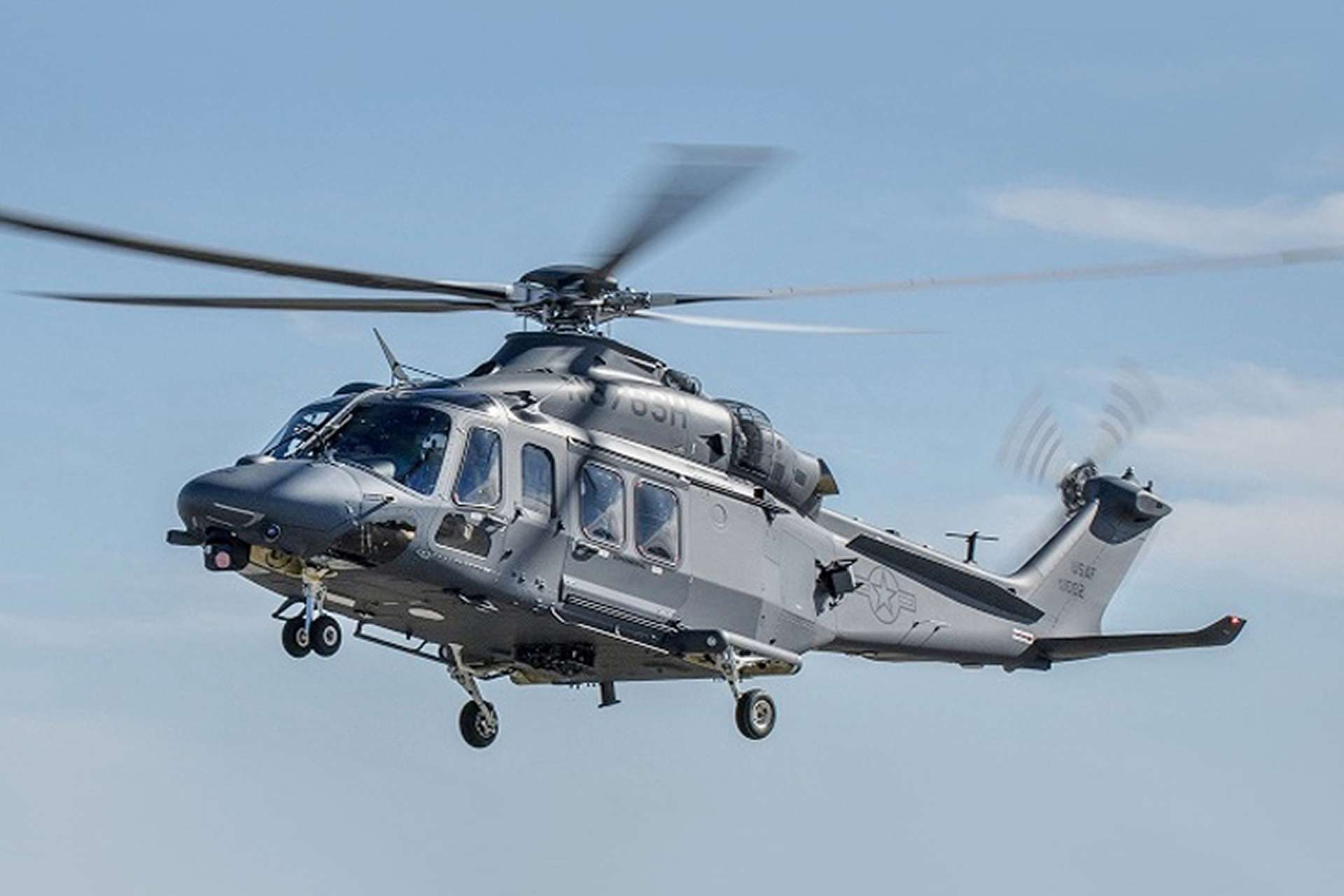Breaking News
Boeing Delivers Advanced MH-139A Grey Wolf Helicopters to Strengthen US Nuclear Security.
On August 29, 2024, Boeing delivered the second batch of MH-139A Grey Wolf production helicopters to the U.S. Air Force. The announcement was made on Boeing’s X account (formerly Twitter). The helicopter, built in Philadelphia, is destined for Malmstrom Air Force Base in Montana, where it will be used to enhance the security of nuclear facilities.
Follow Army Recognition on Google News at this link

Boeing MH-139A Grey Wolf Helicopter (Picture source: Wikimedia)
The MH-139A, developed in collaboration with Leonardo, offers a 50% increase in speed and range compared to its predecessor, as well as a 5,000-pound increase in maximum takeoff weight. These improvements are designed to boost the efficiency of U.S. Air Force missions while reducing operating costs and improving reliability and maintenance.
The first batch of MH-139As was delivered on August 5, 2024. This delivery is part of a low-rate initial production contract signed in 2023 for 13 helicopters, intended to replace the UH-1N Hueys currently in service. Boeing also received an additional order in 2024 for seven more MH-139A helicopters, bringing the total number of aircraft under contract to 26, including six designated for research, development, testing, and evaluation.
The MH-139A program responds to the need to modernize the U.S. Air Force fleet, particularly for security missions around nuclear missile fields and the transportation of high-ranking officials. This program follows an initial $2.4 billion contract awarded to Boeing in September 2018 to replace the UH-1N, as part of the first major acquisition by the Air Force Global Strike Command in ten years.
The MH-139A Grey Wolf is a twin-engine helicopter designed for multi-role missions, based on Leonardo’s commercial AW139 helicopter, but with specific military enhancements. It is equipped with a five-blade main rotor system, offering high performance and significant noise reduction. The aircraft features an armored cockpit and self-sealing, crash-resistant fuel tanks, increasing its survivability in hostile environments. With a cruising speed of 135 knots and a range of 225 nautical miles without refueling, the MH-139A can transport nine combat-equipped troops, as well as security response equipment. It also integrates advanced avionics, communication, and navigation systems, as well as threat countermeasures such as missile warning systems and infrared countermeasures.
The MH-139A Grey Wolf is slated for missions such as security patrols, search and rescue operations, and the transport of personnel and cargo. Initially, the Air Force planned to acquire 84 of these helicopters to meet security and transportation needs across extensive intercontinental ballistic missile (ICBM) fields and to provide executive airlift in the Air Defense Identification Zone (ADIZ), including the National Capital Region. The Grey Wolf will also play a role in aircrew survival training.
However, the exact number of MH-139s in the fleet remains uncertain. The original requirement of 84 helicopters was first reduced to 80, then to 74, and the most recent Fiscal Year 2025 budget suggests a potential reduction to a fleet of 36 aircraft. The program has faced several delays and challenges, including difficulties in obtaining Federal Aviation Administration (FAA) type certification. Although FAA certification is not typically required for U.S. military aircraft, it is necessary for the MH-139 due to its extensive operations in domestic airspace.
Compared to its predecessor, the UH-1N Huey, the MH-139A Grey Wolf offers significant advancements specifically designed for the protection of sensitive nuclear sites, including intercontinental ballistic missile (ICBM) fields. With a 50% increase in speed and range, the Grey Wolf can swiftly respond to potential threats, ensuring faster and broader coverage of critical ICBM installations. Its enhanced lifting capacity, able to carry 5,000 pounds more than the UH-1N, allows for the rapid deployment of specialized security teams and essential equipment needed to safeguard these high-risk areas. The 30% larger cabin provides the flexibility to transport more personnel or additional gear, crucial for reinforcing the defense of strategic ICBM sites. Additionally, the advanced avionics and automation systems of the MH-139A not only enhance mission safety but also improve operational efficiency, enabling more effective surveillance and response strategies. These capabilities are vital for maintaining the security and integrity of the nation’s most sensitive nuclear assets.
The delivery of this second batch of MH-139A Grey Wolves marks an important milestone in the continuation of this modernization program. Further deliveries are expected in the coming months.

Boeing MH-139A Grey Wolf Helicopter (Picture source: US DoD)


























